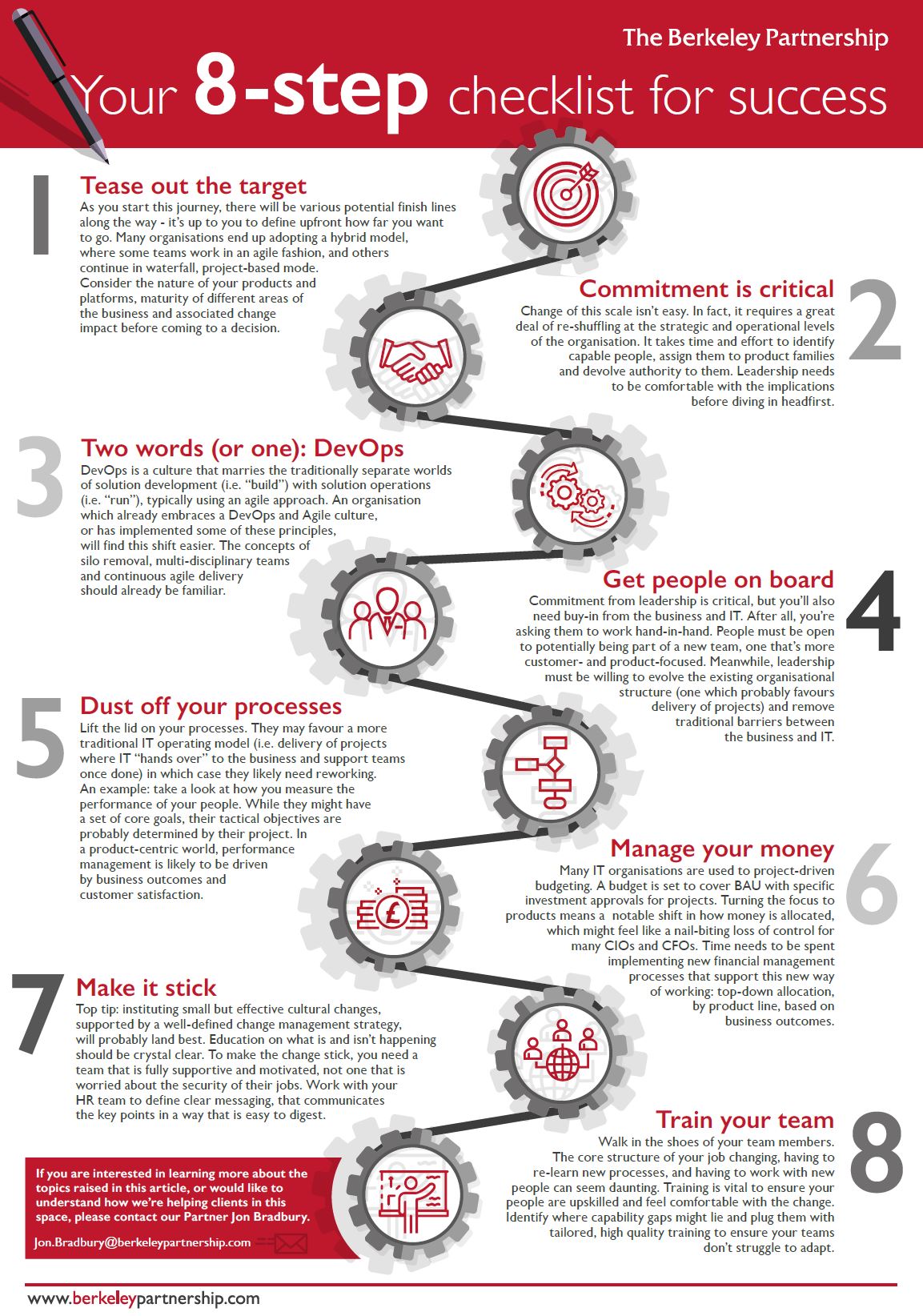You might have heard of the “product and platform” technology operating model, and how it’s gradually eclipsing the traditional project-driven model for IT functions.
In a nutshell, with a product-centric model, the IT function begins to act like a business; one that serves customers and produces products. The products? You might call them IT applications or solutions. The customers? Anyone who uses the application and finds it valuable – internal or external. A dedicated multi-disciplinary team, with specialist knowledge of the underlying platform, is assembled around each product. Their responsibility is to make sure that this product continues to serve the customer’s needs, while those needs keep changing.
The traditional approach of “steady state run, with the occasional big project” is being replaced by “continuous, agile evolution”, and this structural approach recognises and embraces that change. Thus, working hand-in-hand with the business, agility and responsiveness to the market are embedded deeper into the DNA of the organisation.
Nevertheless, making the jump to a product-centric operating model is much more than a quick re-organisation or a simple refresh of internal processes. It’s a new way of approaching work which needs to be carefully embedded into the ways of working and culture of the organisation.
Get this right and the benefits can be substantial, so we’ve compiled a checklist to help you get there.












